| Name | Simcoe Cortex Extractor |
| Lead Time | Lead time advised within 48 hours of order placement. |
| Competitor | ;E4969;601203;60-1203;6012-03;OP0902901;OP0902-901;E4969L;E4999;601204;60-1204;6012-04;6012-03_6012-04; |
| Specialty | Ophthalmology-Cannulas |
| Material Finish | Stainless Steel |
| Grade | Premium Operating Room |
| Units of Measurement | Each |
| Manufacturer | Steknor International |
| Sterility | Non-Sterile |
| Usage | Reusable |
Simcoe Cortex Extractor
23-gauge Simcoe Cortex Extractor is a useful tool in cataract procedures. Following emulsification, if part of the lens cortex remains, the extractor is used to remove the tissue especially at the difficult 12’oclock position. Two different working lengths are available depending on surgical preference.
Description
Reviews (0)
Be the first to review “Simcoe Cortex Extractor” Cancel reply
Shipping & Delivery
Related products
Maumenee Vitreous Aspirating Needle
blunt tip w/ markings, 5.0 mm, 10.0 mm & 15.0 mm, 18-gauge Maumenee Vitreous Aspirating Needle is a commonly used tool in retinal ophthalmologic procedures. The needle features a large gauge designed for the aspiration of the viscous vitreous fluid following retinal detachment or increased pressure. In addition, markings on the gauge aid the physician in navigation of the tool.
McIntyre Lacrimal Probe Cannula
2" (5.0 cm), 23-gauge McIntyre Lacrimal Probe Cannula is an extremely useful tool in treating tear duct obstructions. The probe may be used to investigate blockage of lacrimal gland damage or more frequently, obstruction of the nasolacrimal duct. The slender profile of the cannula allows access to the small entrances of the duct. Both straight and curved models are available depending on surgical preference.
Bailey Lacrimal Cannula
reinforced shaft, 23-gauge, 1/2" (1.5 cm) Bailey Cannula is an extremely useful tool in treating tear duct obstructions. The cannula may be used to investigate blockage of lacrimal gland damage or more frequently, obstruction of the nasolacrimal duct. The cannula features a reinforced shaft to prevent bending and kinking during the procedure, while the shorter working length affords the surgeon more control.
Randolph Cyclodialysis Cannula
front air injection port, 12.0 mm angled tip, 19-gauge Randolph Cyclodialysis Cannula is a commonly used tool in glaucoma procedures. The cannula is frequently used to irrigate the anterior chamber once a communication has been established between the anterior chamber and the suprachoroidial space. The cannula has a front injection air port and features a flat tip or thin spatula blade depending on surgical preference.
Lacrimal Cannula
1.2" (3.1 cm) shaft w/ 2.0 cm reinforced, 23-gauge Lacrimal Cannula is an extremely useful tool in treating tear duct obstructions. The cannula may be used to investigate blockage of lacrimal gland damage or more frequently, obstruction of the nasolacrimal duct. The slender profile of the cannula allows access to the small entrances of the duct. Two different working lengths are available with the cannula depending on surgical preference.
Kelman Cyclodialysis Cannula
19-gauge cannula, marked at 5.0, 6.0, & 7.0 mm, 2 irrigating ports Kelman Cyclodialysis Cannula is a commonly used tool in glaucoma procedures. The cannula is frequently used to irrigate the anterior chamber once a communication has been established between the anterior chamber and the suprachoroidial space. The cannula features a port on both the right and left side depending on surgical preference.
Gills-Welsh Cannula
25-gauge, angled Gills-Welsh Cannula is a commonly used tool in cataract and various other ophthalmologic procedures. The small gauge of the cannula may be used to aspirate fluid in the anterior chamber of the eye following a limbal incision. Four different angles are available with the cannula depending on surgical preference.
Lacrimal Cannula – Reinforced Shaft
1.2" (3.1 cm) shaft w/ 2.0 cm reinforced, 23-gauge Lacrimal Cannula is an extremely useful tool in treating tear duct obstructions. The cannula may be used to investigate blockage of lacrimal gland damage or more frequently, obstruction of the nasolacrimal duct. The cannula features a reinforced shaft to prevent bending and kinking during the procedure.

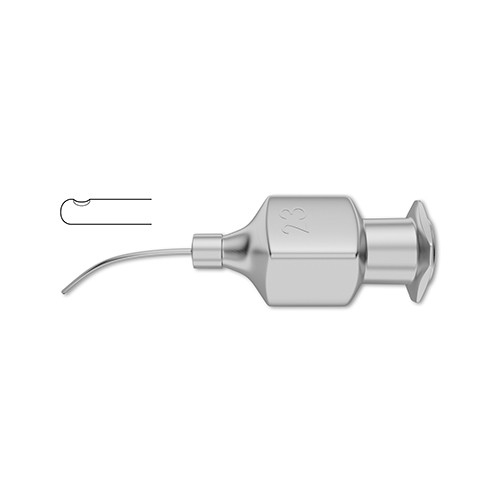
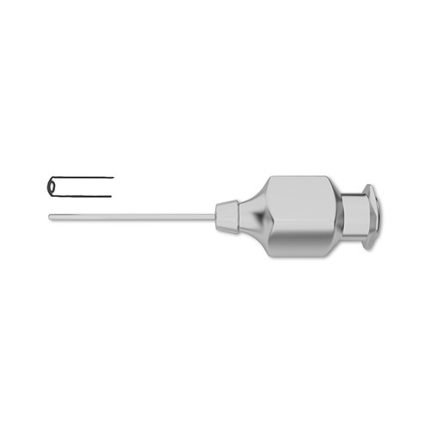
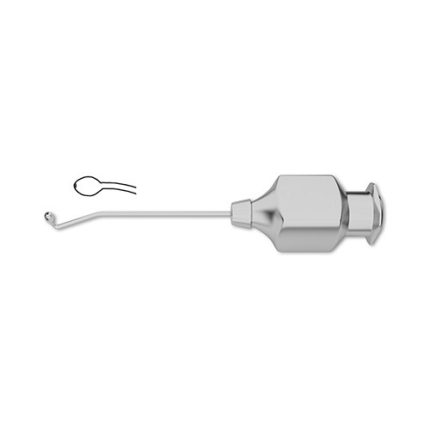

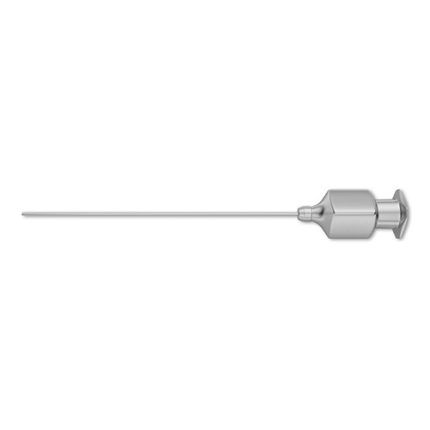

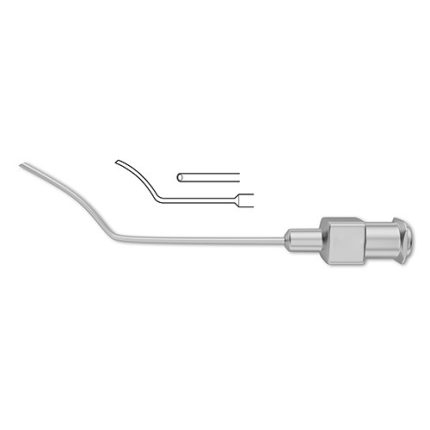

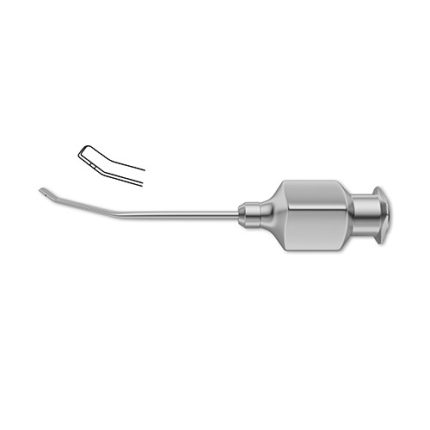



Reviews
There are no reviews yet.